Emotional Catharsis Through Intuitive Art
This post about catharsis and spirituality in art is enabled by the grant that I got from Arts Promotion Centre Finland. This is the fifth blog post of the project, see the first one here, the second one here, the third one here, and the fourth one here!
Recently I have thought about Wassily Kandinsky so much that he has become an imaginary character in my mind. He seems to enjoy this life after death, and I like him hanging around when I paint. This time it led to emotional catharsis – a very powerful experience. Here’s the story!
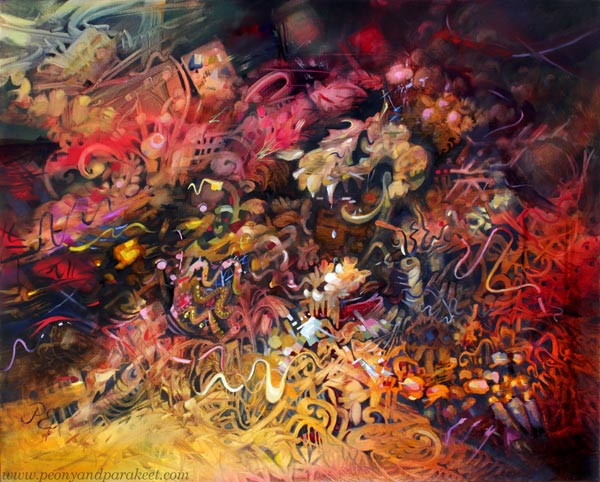
Let’s Go to The Dark Side!
One morning, before starting the painting, I read one of my recent blog posts to Wassily:
“Because expressing light is impossible without painting the darkness, I have decided to explore spirituality’s ultimate opposites as well. Like insolence, materialism, and money.”
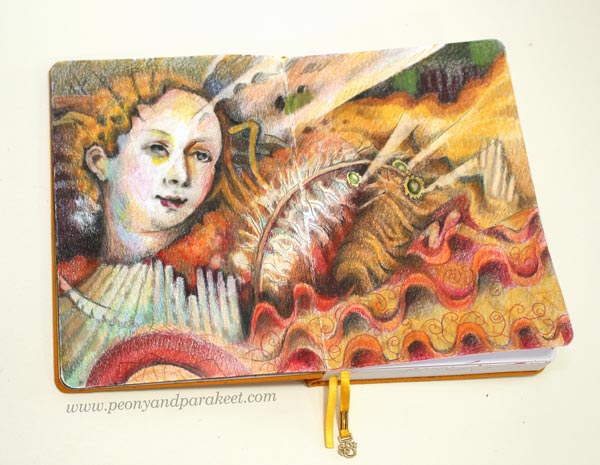
“Let’s do it!” Wassily immediately exclaimed with his Russian accent. “Let’s paint what money looks like! Do you like money, Paivi?”
The question alone was vulgar and intrusive, and the whole subject made me shiver. “What’s the problem? Haven’t you ever painted the dark side?” Wassily asked and looked confused and a bit more gentle too.
Well, I hadn’t. Not in this scale, anyway. The idea of spending the next few weeks with blacks and bloody reds felt heavy. In my life, there have been times when I had liked money too much, for example, when I sold IT solutions to big organizations. Secretly, it felt almost as good as making art. Back then, I bought lots of art supplies, but the time for using them was much more limited. Too limited.
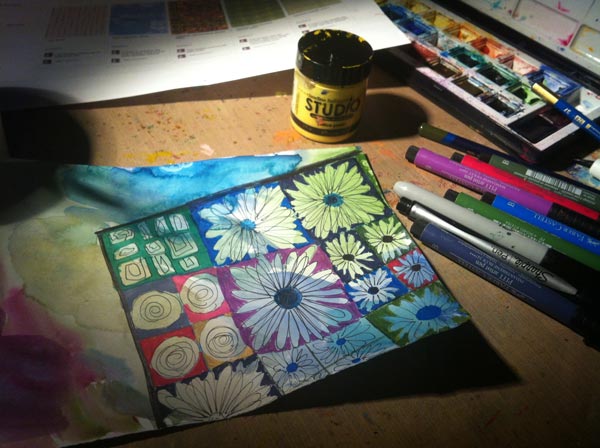
“Wassily,” I said, “money almost took me away from creating, so how can I create a painting about it?” But Wassily is a funny guy. He doesn’t answer questions that he wants me to answer through creating. Then he just stares at me silently like a watchdog, preventing the escape from the studio.
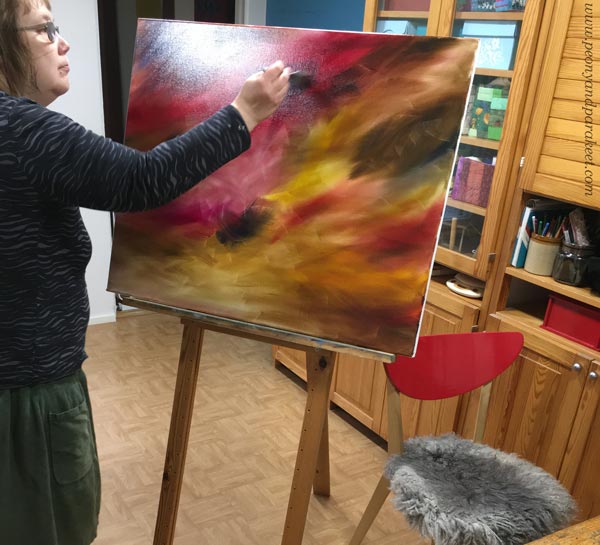
So I can do nothing but start.
From a Pet to a Beast
While filling the blank canvas, I tried to comfort myself by thinking about how money can be a good thing too, enabling grand and beautiful things.
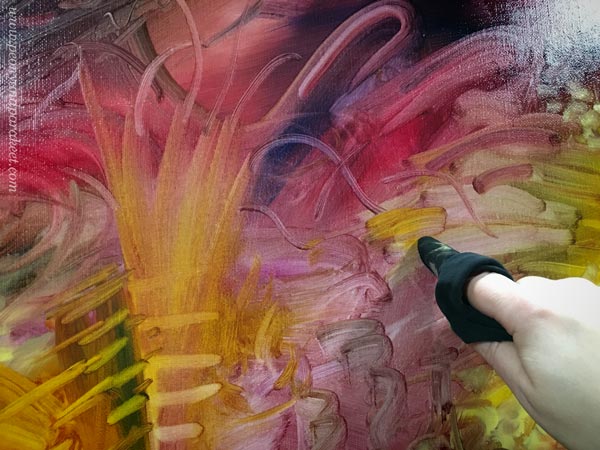
“I will paint all the luxury,” I said to Wassily and picked Indian Yellow, the color of gold.
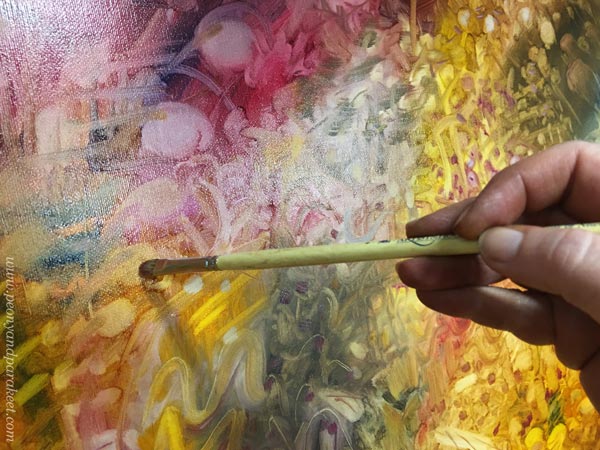
It all went fine for a long time. The painting was like a lion cub, cute and pretty at a young age, a true pet.
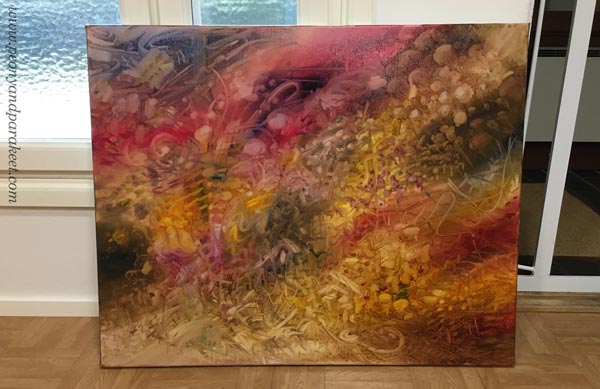
But then slowly, the colors got stronger, and shapes began to stretch in all directions.
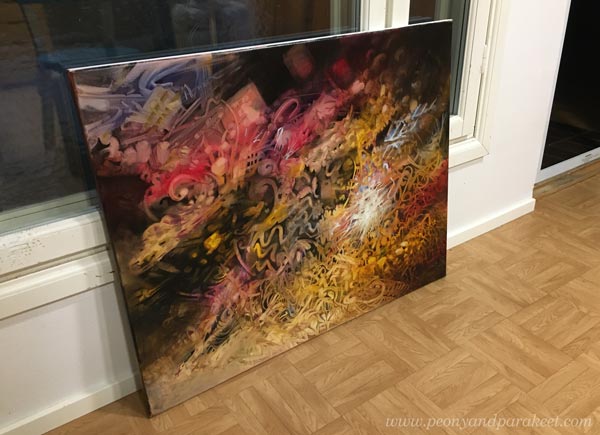
The pet had become a beast, and I couldn’t control it anymore.
Emotional Catharsis – Letting Go of Control
Just before I was about to give up the fight, Wassily stepped towards and said: “What was it like as a teenager before you chose money” He was pointing me with a brush that had Ultramarine Blue and Cadmium Red. The colors that I used so often back then.
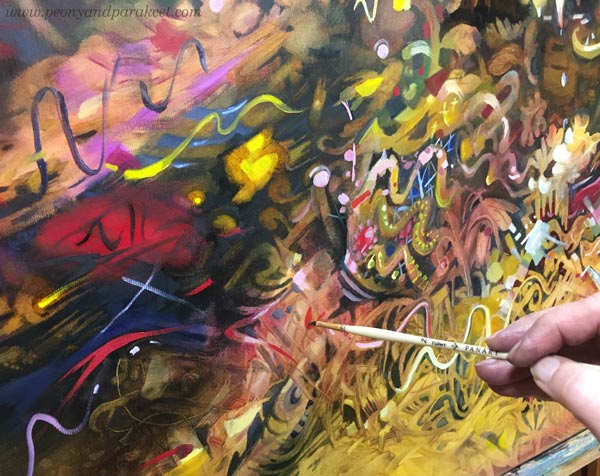
“Not now, Wassily, I can’t be weak now. I have this beast to handle”, I gulped, pointing towards the painting. But he grabbed my hand and, unlike his usual self, brutally fed it to the growing lion. The pain took over, the colors splashed uncontrollably, and for a short time, moments of my life ran through me when the lion ate me bit by bit. I was a teenager trying to find her painting style and become an artist. A young adult losing her parents and, as a result, counting pennies.
But then, just before the last ray of light burned out, I heard Wassily’s demanding voice: “You are not dead yet. Open your eyes and finish the painting.”
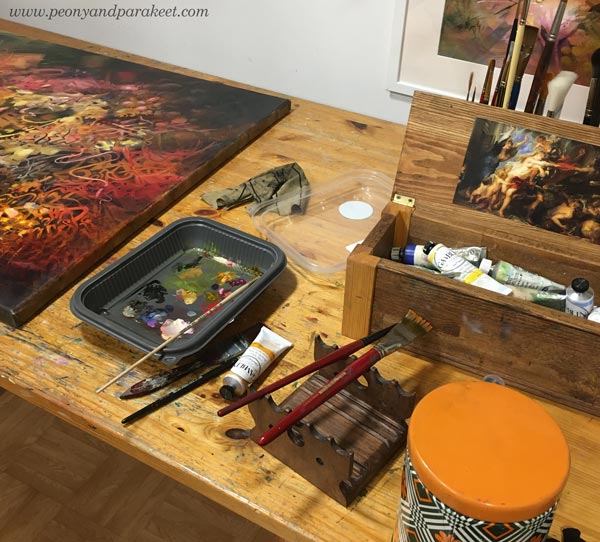
Days went by, and I visited the painting now and then like it would be a rare animal in a cage. Something had happened, but what? Wassily got frustrated: “Can’t you see it? It’s vanitas!”
Vanitas – Emotional Catharsis Explained
Vanitas paintings are still lives that express the inevitability of death in symbols. They were in fashion in the Netherlands in the early 17th century, but they have inspired artists later too.
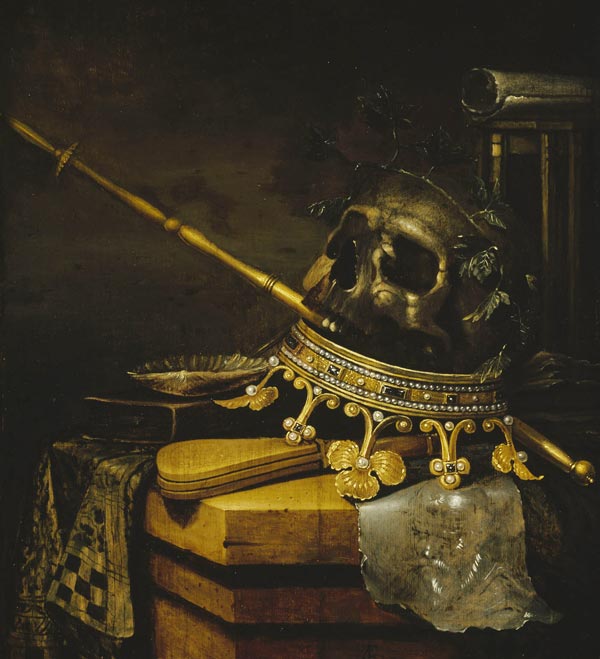
Suddenly, my lion shrank to only a skull, and there were bubbles, smoke, candles, musical instruments, playing cards, flowers, a bowl … all kinds of historical symbols for the futility of pleasure and certainty of death. Now finishing was easy. I just made the objects a little more distinct.
Here’s the closeup of the lion skull.
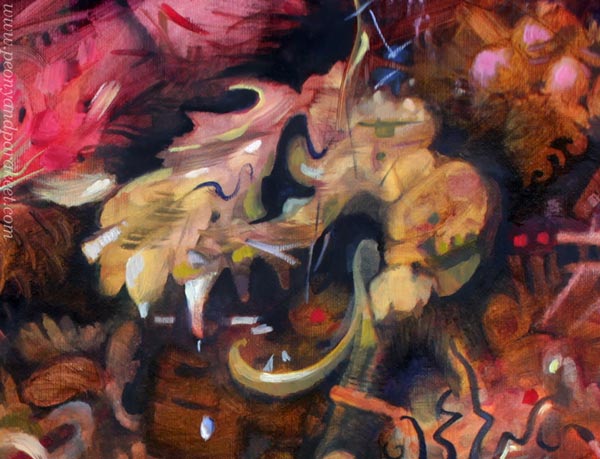
Playing cards are flying in the air.
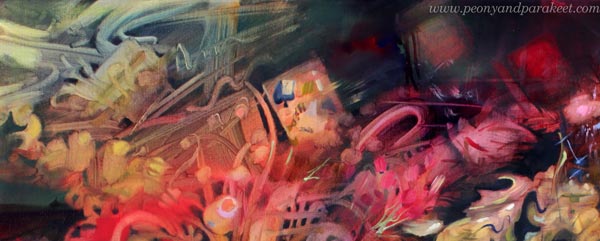
Here’s the crown, thrown in the mud.
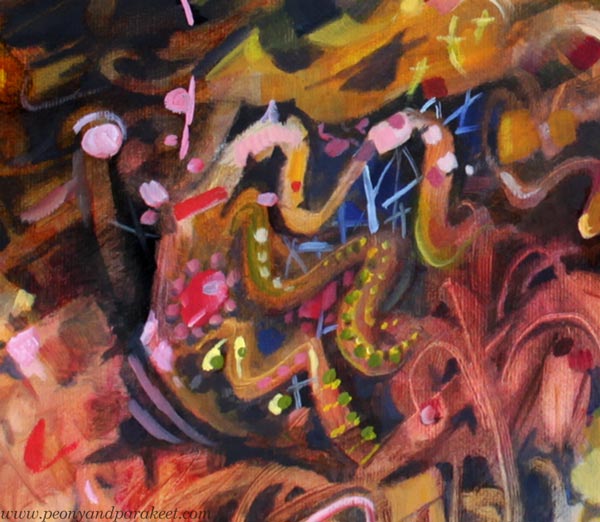
If you look carefully, you can also find lots of other symbols too. For example, a red bowl in the middle broken by icy water. And the yellow bottom expresses musical instruments and their sounds.

My favorite part is what the imaginary Wassily painted:
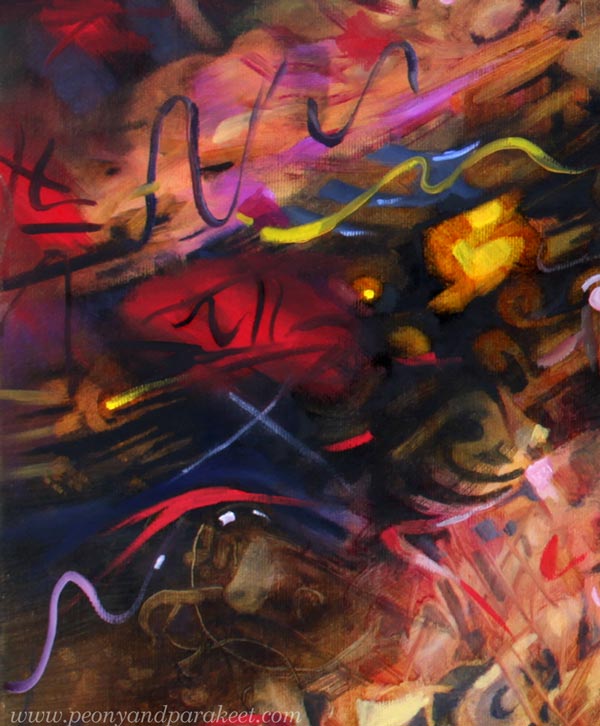
“This is how money looks like,” said Wassily in his teaching voice. “Don’t feel pity or fear about it anymore. Now you are free to paint whatever you want.”
– “I want to paint a couple of big floral still lives inspired by the 17th-century Dutch masters!” The relief and enthusiasm filled my mind.
– “Whatever,” yawned Wassily. Clearly, it would not have been his choice, but I hope he’ll keep sticking around anyway.
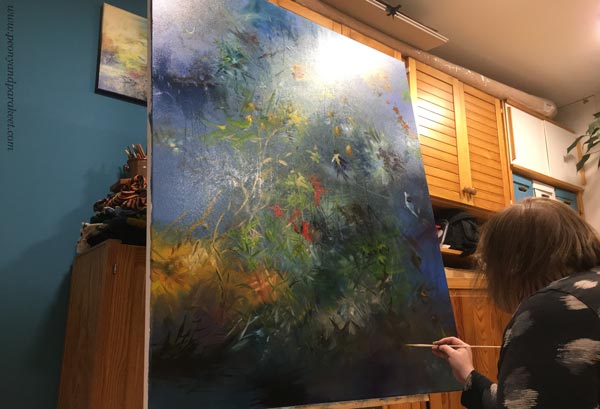
Have you ever experienced emotional catharsis through art-making? So, feeling purified after going through the climax of negative emotions? Do you always create for beauty or do you like to step to the other side too?
Art Journey to Spirituality – Let’s Begin!
This week, we will begin a journey to express spirituality through art. Think about this and the upcoming blog posts as an interactive diary that you can adapt to your own work. The idea is to question and examine first and then intuitively find more truths.
Introduction to the Journey
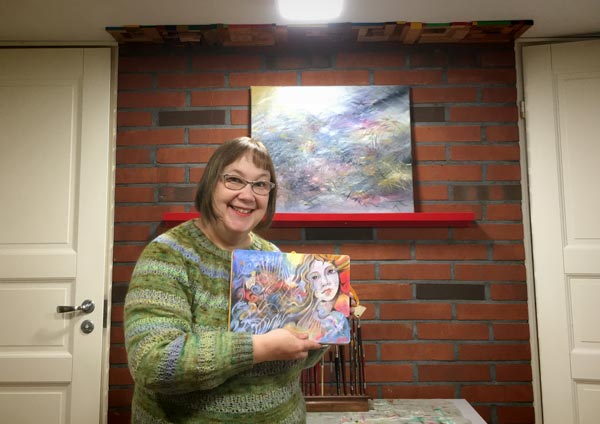
As I wrote last week, I have got a grant from The Arts Promotion Centre Finland to create a series of paintings and write about the process.
In the series, I will dive deeper into Wassily Kandinsky’s idea of unleashing the inner sound of form (check the class Floral Freedom). I will also examine the art of the 16th and 17th centuries and get influences from there. My paintings will express spirituality, but they won’t be subject to any particular worldview or religion.
I will work both systematically and intuitively. I will create studies in my colored pencil diary that help me to build a formal language for each intuitive painting (check the class Intuitive Coloring).
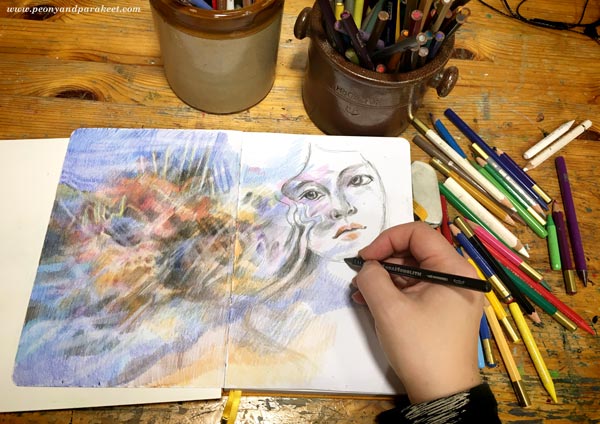
I hope this 3-month project inspires you to start an art journey to your spirituality! Take a bit of time for it every week, have a sketchbook or an art journal, maybe create a few paintings too. You can also write down names, quotes, and personal thoughts. The idea is to keep ideas and associations flowing while art gets created!
I hope to hear your thoughts in the comments! If you want more social support, purchase any of my classes and you will get to my community Bloom and Fly for the rest of the year. We will have discussions about this project in the Facebook group of the community.
Ok, let’s begin!
How to Define Spirituality
First, let’s ask what spirituality is! Google replies:
“the quality of being concerned with the human spirit or soul as opposed to material or physical things.”
But as artists, we don’t have to obey any general answer. Rather, it’s expected that our art expresses our personal points of view. I also believe that any word can start a journey. The first answer is just a ticket, and the answers get deeper piece by piece.
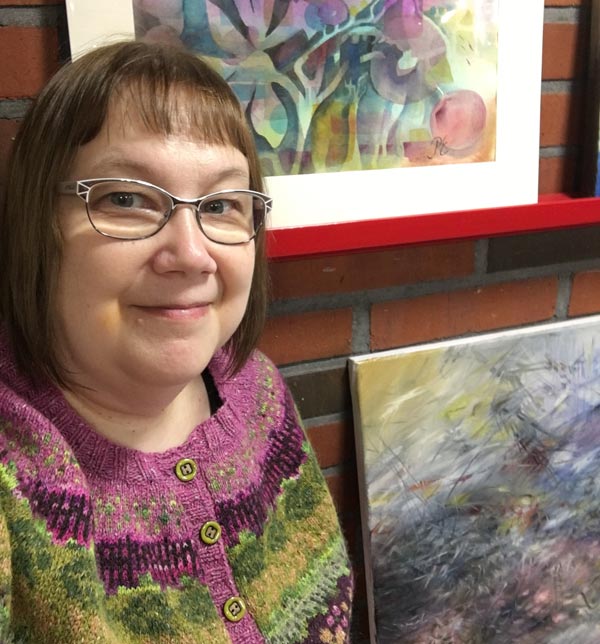
Connection, empathy, and understanding – I imagine squeezing these three words in my hands like they would be paper tokens. I want to connect with artists in the past, empathize with their shapes, and understand how to go deeper. But instead of getting overly serious, I also want to learn to play. The goal is to create a spectrum rather than one truth.
What three words would you pick as your tickets to a spiritual journey?
Meeting Sandro Botticelli
The first painting of the series will be the one that started last July. It was then black and white, an underpainting only.
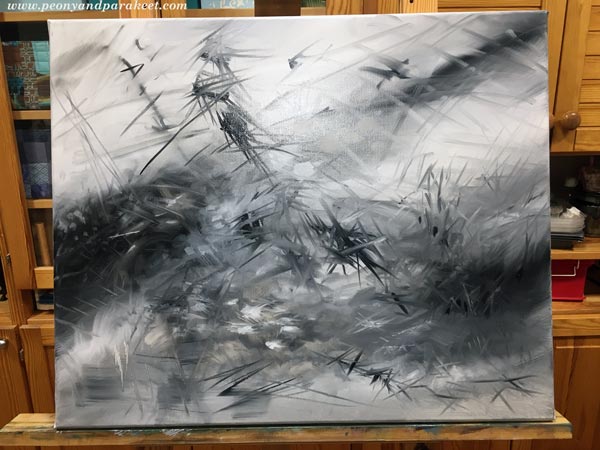
This week I got back to it and brought in more colors.
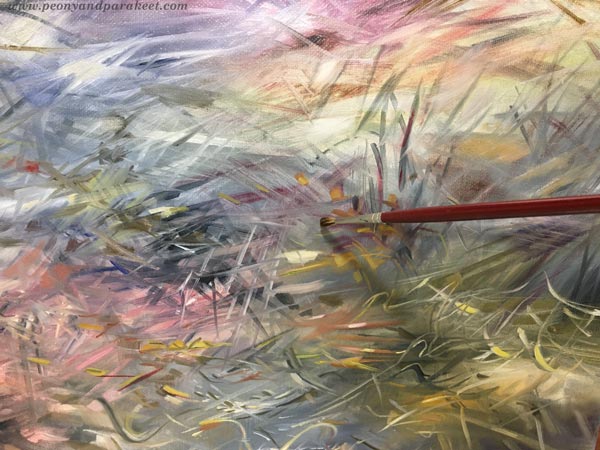
Even if the painting is not finished yet, the colors took me to meet the first companion of my journey – Sandro Botticelli.
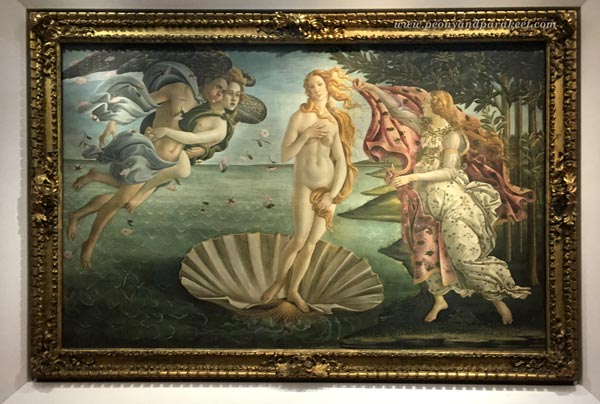
Sandro Botticelli (1445-1510) was an Italian painter. I have seen his famous paintings Primavera and The Birth of Venus in the Uffizi Gallery, Florence, but many other pieces inspire me too.
Botticelli equals perfection in many ways. His shapes and lines are so flawlessly beautiful that they make me shiver. He didn’t paint alone but had apprentices. I wonder what it would be like to work in his workshop – trying to paint a curvy line that would get his approval! Botticelli was born again in the 1850s when the Pre-Raphaelites found him. The easy way to fall in love with Botticelli’s work is to look at, for example, Evelyn de Morgan’s (1855-1919) romantic ladies. After those, it’s easy to greet Sandro too.
Botticelli’s Spirituality
I made this little study of Botticelli’s style in colored pencils to examine how his shapes are. It’s often good to let the hand think instead of using only the mind.
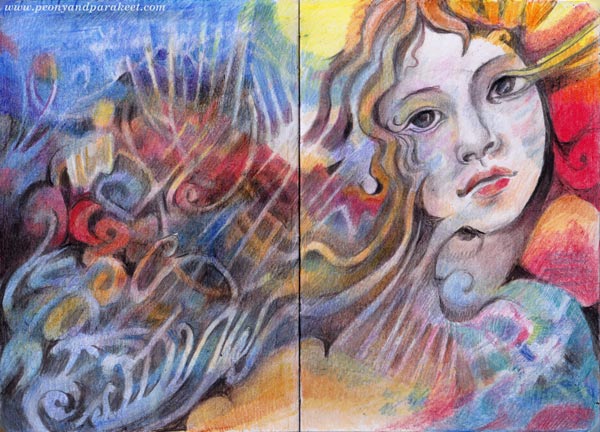
When I imagine discussions with Botticelli, he whispers out romantic mysteries. “Your stories would make great plays,” I tell him. But what interests me most is not the characters themselves, but how ornamental their speech is and how much in detail he describes their clothing and the overall setting.
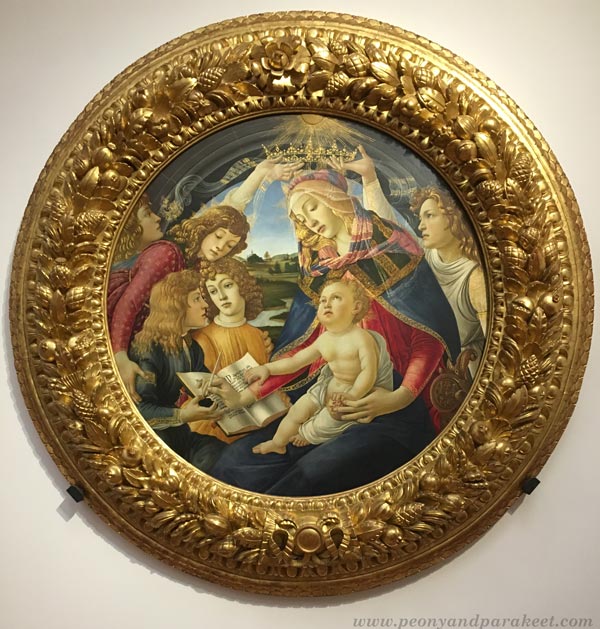
I think the spiritual in Botticelli is the way he empathizes with things. For example, how a thin vail looks like the extension of the soul. Or how the flowers that are on the ground continue on the dress and fly in the air. Sandro’s people look immersed in their surroundings.
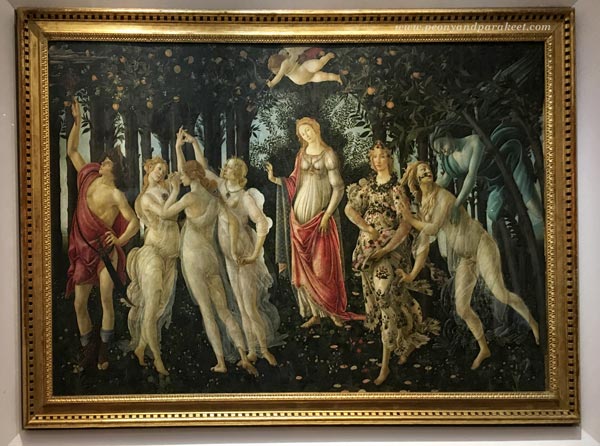
Like Wassily Kandinsky would say, they seem to be not watching something as outsiders but being an integral part of the overall experience. I hope that this understanding will somehow help me to finish the painting!
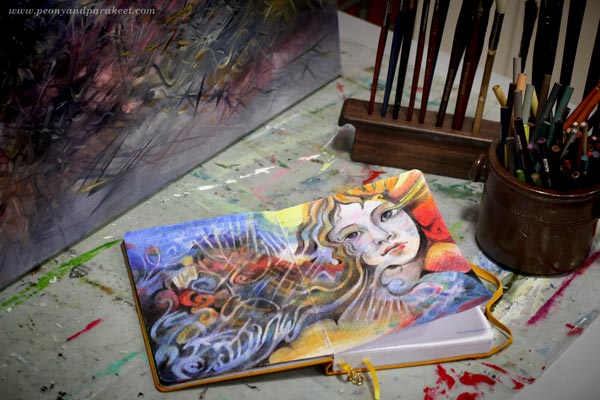
Tell me, who is the first companion in your art journey to spirituality? Botticelli or somebody else?
Art is a Lemon Tree – How’s Your Lemonade?
This week, I talk about art and lemonade and share some news about the rest of the year!
I was going to make a cheerful spread on my colored pencil diary, celebrating a beginning of a period that I have never experienced so far in my life. But I started the drawing intuitively, and here’s what came up: a murky image with a bittersweet impression!
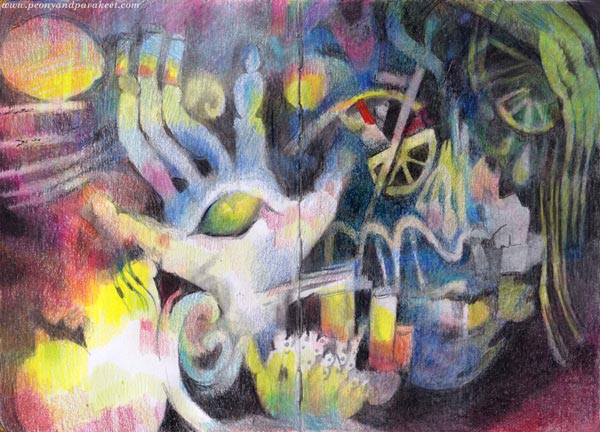
“When life gives you lemons, make lemonade,” they say.
I have never been fond of that kind of forced optimism, but I guess there’s also a seed of truth. In art, you have to make most of what you have.
What Kinds of Lemons Does the Tree Produce?
In 2014, when I became a full-time artist, I thought about growing my skills and how that would naturally lead to something good. But nowadays, my leap has felt more like changing a long CV in technology and service design to a very short, almost non-existent, CV in art.
Art is like a lemon tree. You can nurture it, but you can’t change its variety. Over the years, I have learned not only to teach but also to illustrate, make surface designs, and even draw ornaments and logos. But my heart has always been in fine art, and especially in intuitive abstracts.
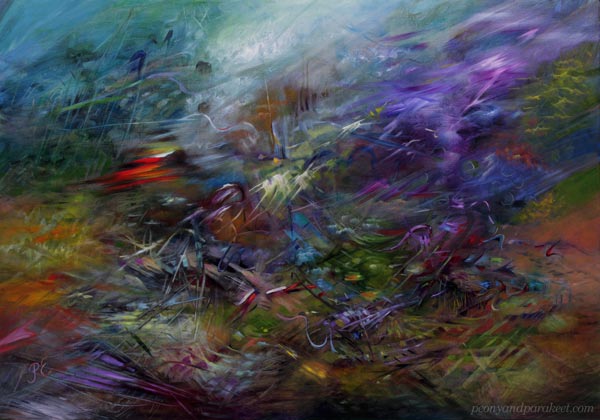
In my opinion, fine art makes the best lemons. But the weather is harsh, and the harvest becomes too small to be enough for the lemonade. So my passion for teaching has often been the lemonade maker, not the actual paintings.
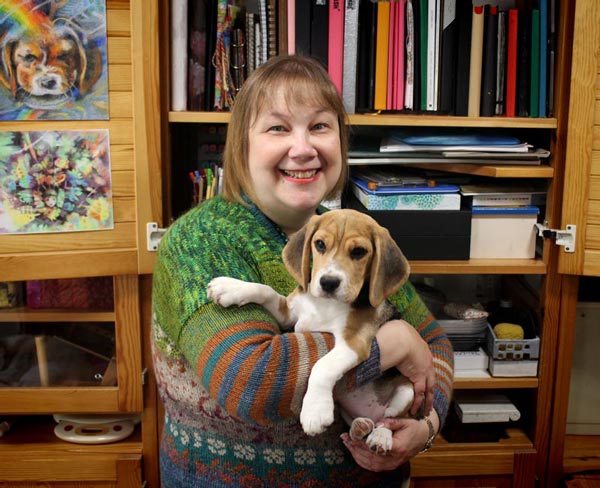
But now, things change for a few months. I have got a grant from The Arts Promotion Centre Finland to create a series of paintings and write about the process. I will publish the art and most of the writings here in my blog, so you will also get to drink this lemonade!
The project has a set theme that also includes a background study. I will also continue the colored pencil diary and document a part of the process in colored pencils. Later posts will reveal more.
I hope that my project will also inspire you to create – grow more lemons and make your kind of lemonade!
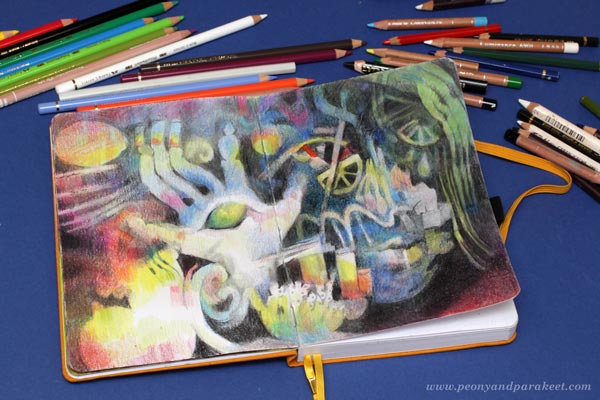
P.S. You can still sign up for Intuitive Coloring! You will get the published lessons immediately after signing up, and can start having fun right away. >> Sign Up Now!
All In – Finding Uncommon Inspiration
This week, I share my biggest painting so far, and talk about computer games and all the things that should not inspire but that do!

Here’s the last painting of the series that I have been working on this year. It’s called “All In.” The Finnish translation “Kaikki peliin” is perhaps even more suitable because there’s the word “peli” – the game. In this painting, I made every element look like it moves – like in a computer game!
I Am Not a Gamer
No, I am not! Actually, I am the last person who should be talking about computer games because I don’t play them at all. But I have seen some commercials on television and Youtube, and they make my heart beat faster – that’s the tribe where I belong! Despite I hate seeing violence, and don’t usually even watch action movies. Action upsets me. In general, I prefer everything cute and pretty.
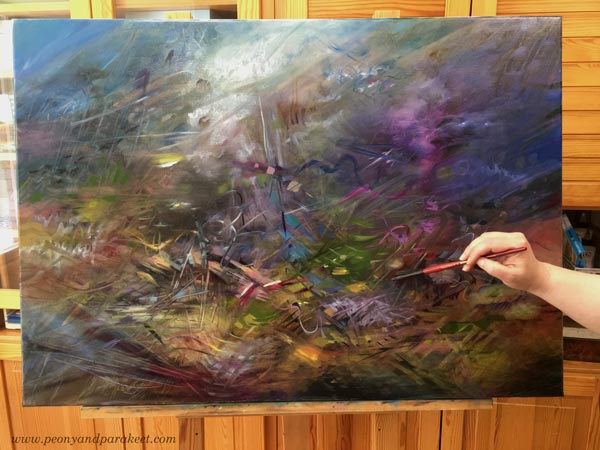
My Imagination Loves Games
But when I paint, I am not just an artist with all kinds of brushes and tubes. I become a nerd who tries to find the fastest processor and the best graphics driver for rendering 3D from her brain. It no longer matters what kind of art I should create and how art should be created. I change to a guy who moves from one level to the next, always seeking more monsters, more excitement, more points.
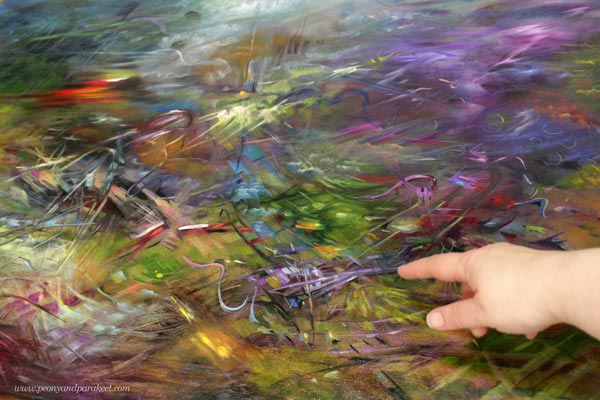
Because I don’t play the games, I should not even know how it is like. Yet, I feel I do. Namely, in my twenties, I chose computers over art. I felt I belonged to the world of introverts who built systems – worlds of their own. And now, when I paint, my paintings bring me back to the same setting – how to build a world that operates like a fast-moving game, with many layers and levels.
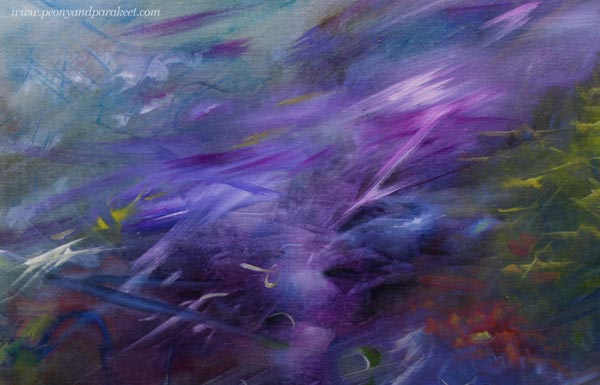
This is not what I would have expected. If someone said to me: “Hey Paivi, you should paint game sceneries. Make your own games!” I am pretty certain that a couple of years ago my answer would have been: “You must be kidding. I am a feminine romantic who hates that stuff!”
The Adventure for Uncommon Inspiration
But art is an adventure. It’s not only a journey to a variety of techniques and skills but also an exploration that includes the darkest corners of your mind.
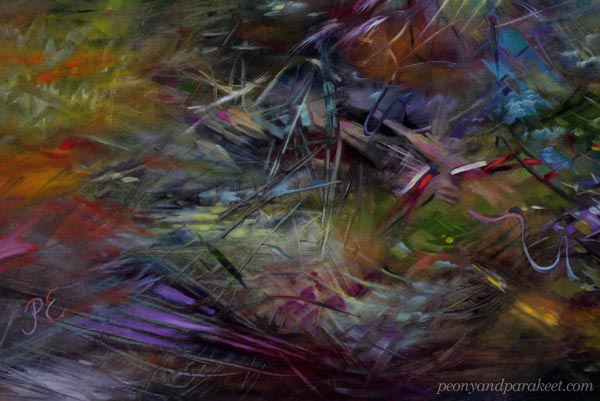
In 1980s, I was a girl who sat in a local library on hot summer days, browsing big books of old art. My dream was to become an artist, but knowing that it would not be safe or easy, I said I wanted to be an English teacher. Between the art books of the library, I saw young boys browsing computer magazines. I went to the shelf after them and knew that I also belonged there – to that group of nerds. And when I saw a computer for the first time, my heart beat fast like for the best painting of a museum.
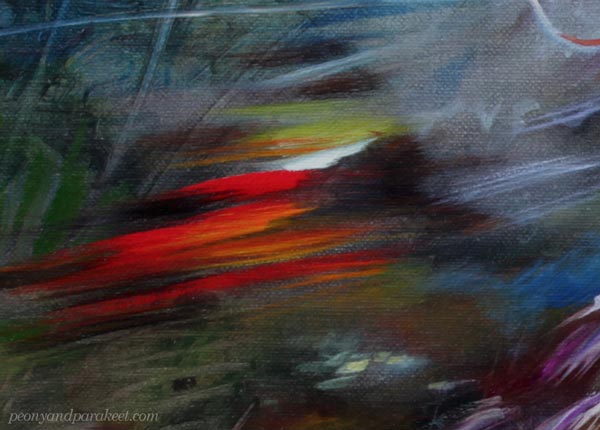
Making a series of paintings has been quiet and hard work. I have had lots of self-doubts and melancholic moments between the sessions. But when I paint, it’s all good. My paintings say: “Tell me what you want and we will give it to you!” And often, I don’t know what to reply, but they seem to know anyway. Like I never told them how nerd I am, but they shamelessly reveal everything and apologize for nothing.
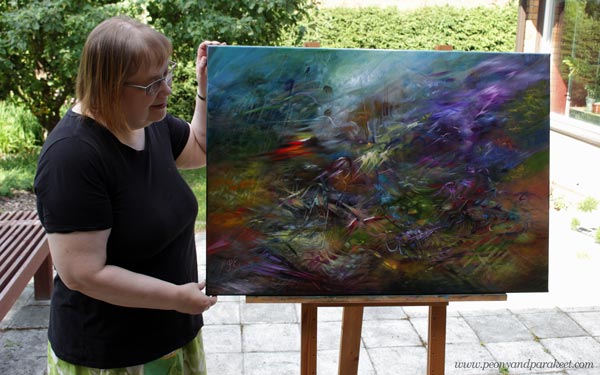
We talk a lot about being unique as artists, but what about if a part of the solution is just to find inspiration that feels uncommon to us. It could be something that we try to get rid of but never seem to manage to do. Or something that we find appalling but still strangely captivating.
What could be your uncommon inspiration? Could the art that you create be a little different from the art that you like to consume? What do you think?